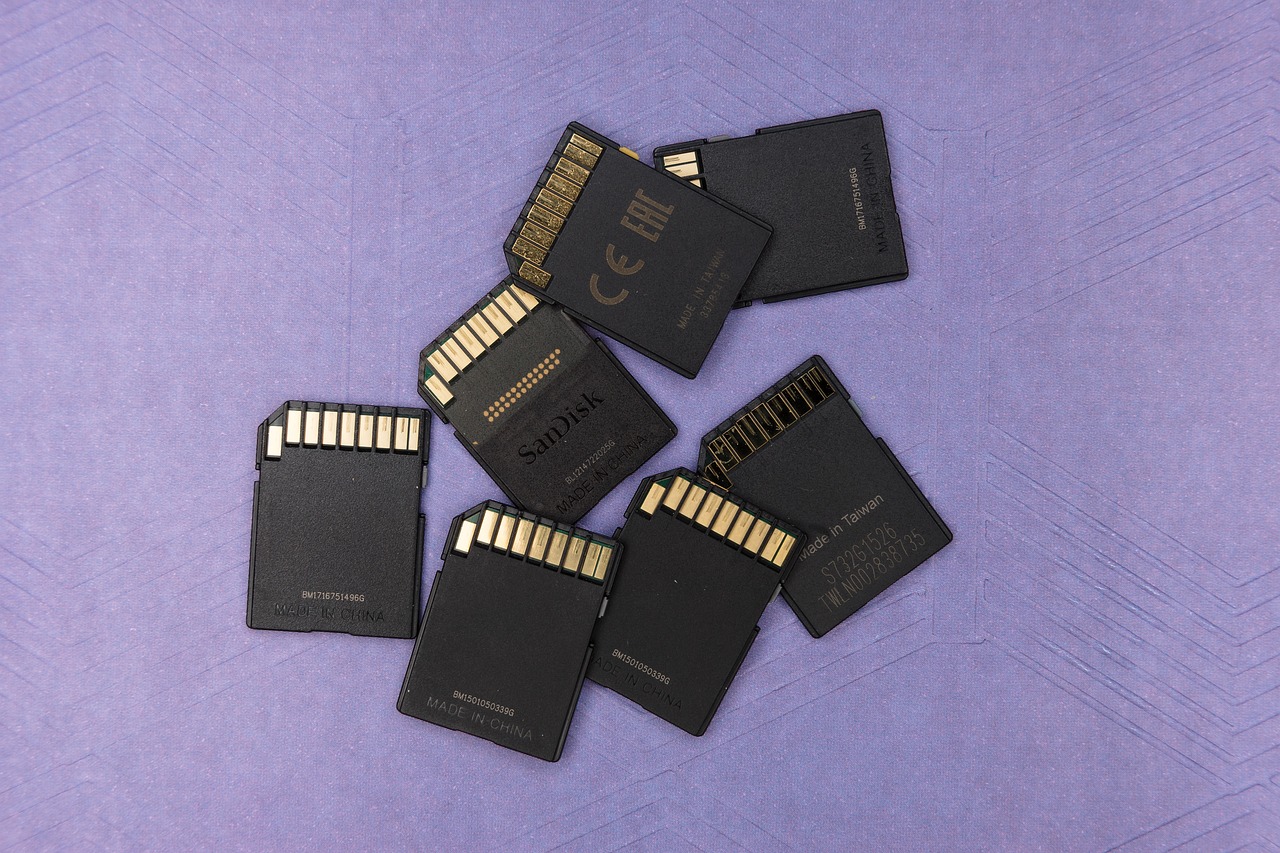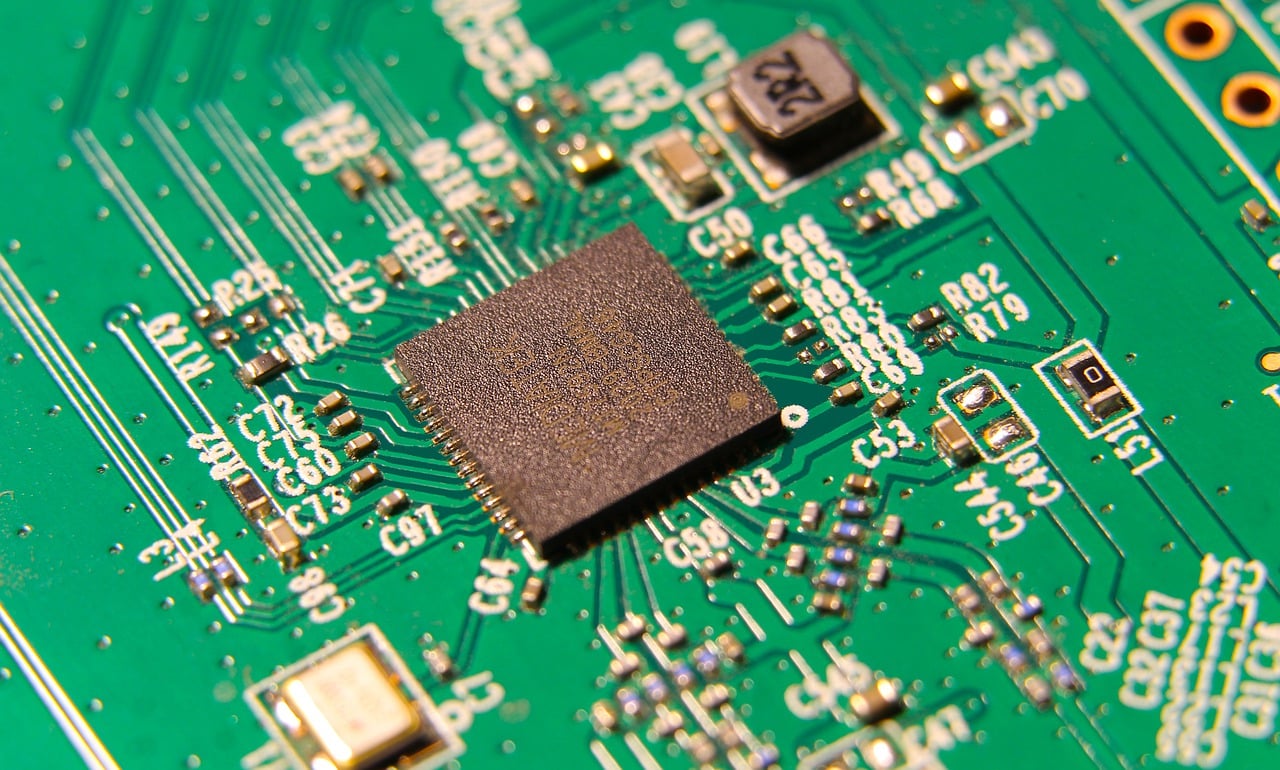LTO Network - Real-World Use Cases for Blockchain
The LTO Network stands at the forefront of blockchain innovation, demonstrating its potential to transform various industries through practical applications. As we delve into the myriad use cases of this technology, it's essential to recognize how it not only enhances operational efficiency but also fosters trust and transparency in processes that have traditionally been opaque. This article explores the practical applications of the LTO Network blockchain technology, highlighting its transformative impact across various industries and showcasing real-world examples of its implementation.
Blockchain technology revolutionizes supply chain management by enhancing transparency, traceability, and efficiency. Imagine a world where you can track a product from its origin to your doorstep, ensuring its authenticity every step of the way. The LTO Network provides tools that allow businesses to streamline processes and verify product authenticity in real-time. With features like immutable records, companies can easily trace the journey of goods, reducing the risk of fraud and ensuring compliance with regulations. This level of transparency not only builds trust with consumers but also significantly lowers operational costs.
In an age where digital identity theft is rampant, the LTO Network facilitates secure and efficient digital identity verification. How often have you worried about sharing your personal information online? With blockchain, your data can be protected while still allowing seamless access to various services. By using decentralized identity solutions, the LTO Network reduces fraud and enhances the user experience. Individuals can control their personal data, sharing only what is necessary for specific services, thereby minimizing the risk of data breaches.
The LTO Network offers innovative solutions for managing legal documents through blockchain. Imagine a world where legal processes are swift, secure, and free from bureaucratic delays. This section explores how smart contracts and immutable records enhance the efficiency and security of legal processes. With blockchain, legal documents can be stored in a tamper-proof environment, ensuring that they are authentic and unaltered. This not only speeds up transaction times but also significantly reduces the potential for disputes.
In healthcare, the LTO Network enables secure data sharing among stakeholders. Picture a scenario where your medical records are easily accessible to all your healthcare providers, ensuring that you receive the best possible care without compromising your privacy. This subheading highlights how blockchain enhances patient privacy, improves data integrity, and facilitates better coordination of care. By allowing patients to control who accesses their data, the LTO Network empowers individuals while also enhancing the overall efficiency of healthcare systems.
The real estate industry benefits from LTO Network's blockchain solutions by simplifying property transactions. Think about the complexities involved in buying or selling a property—endless paperwork, multiple parties, and the risk of fraud. This section discusses how smart contracts can streamline processes, reduce fraud, and ensure transparent ownership records. With blockchain, property transactions become faster and more secure, providing peace of mind for buyers and sellers alike.
LTO Network's blockchain technology can enhance the integrity of voting systems. In a world where trust in electoral processes is waning, how can we ensure that every vote counts? This subheading examines how secure, transparent, and tamper-proof voting mechanisms can increase public trust in electoral processes. By leveraging blockchain, we can create a voting system that is not only secure but also verifiable, allowing citizens to have confidence in the democratic process.
Blockchain enables decentralized energy trading, and LTO Network plays a crucial role in this evolution. Imagine being able to trade energy directly with your neighbors, cutting out the middleman and promoting sustainability. This section discusses how individuals and businesses can trade energy directly, promoting sustainability and efficiency. By facilitating peer-to-peer energy trading, the LTO Network empowers consumers to take control of their energy usage and contributes to a greener future.
The integration of IoT with blockchain is made possible by LTO Network. Picture a smart home where all devices communicate seamlessly and securely. This subheading explores how organizations can benefit from real-time data sharing, improved security, and automation in various applications. With blockchain, IoT devices can authenticate each other, ensuring that data is not only accurate but also secure from tampering.
LTO Network can transform government services by enhancing transparency and efficiency. Imagine a government that operates with complete openness, where citizens can track the status of their requests in real-time. This section discusses the potential for blockchain to improve public service delivery, reduce bureaucratic red tape, and increase citizen engagement. By implementing blockchain solutions, governments can foster greater trust and participation from their citizens.
- What is the LTO Network? - The LTO Network is a blockchain platform that focuses on providing solutions for various industries, emphasizing real-world applications.
- How does blockchain enhance supply chain management? - Blockchain improves transparency and traceability, allowing businesses to verify the authenticity of products in real-time.
- Can blockchain improve digital identity verification? - Yes, it allows individuals to control their personal data while enabling secure access to services.
- What benefits does blockchain offer in healthcare? - It enhances patient privacy, data integrity, and facilitates better coordination of care among providers.

[Supply Chain Management]
When we think about supply chain management, the mind often drifts to a complex web of processes, from sourcing raw materials to delivering finished products. It's like a giant puzzle, and every piece must fit perfectly to ensure everything runs smoothly. Enter the LTO Network, a game-changer in this arena. By leveraging blockchain technology, it brings a new level of transparency, traceability, and efficiency that traditional systems simply can't match. Imagine having the ability to track a product's journey from the factory floor to your doorstep in real-time. That's the power of blockchain.
The LTO Network offers businesses tools that not only streamline processes but also verify product authenticity. For instance, consider a scenario where a consumer purchases organic coffee. With LTO's blockchain solutions, they can scan a QR code on the packaging and instantly access the entire supply chain history. They can see where the beans were sourced, how they were processed, and even the journey they took to reach the store. This level of transparency not only builds trust but also empowers consumers to make informed choices.
Moreover, traceability is a critical factor in supply chains, especially in industries like food and pharmaceuticals, where safety is paramount. If a product is found to be contaminated, companies can quickly identify the source and take action, minimizing risks and potential recalls. With LTO Network's blockchain, every transaction and movement is recorded immutably, allowing for rapid response and accountability.
In addition to enhancing transparency and traceability, the LTO Network significantly boosts efficiency. Traditional supply chains often involve multiple intermediaries, each adding layers of complexity and cost. By utilizing smart contracts, LTO Network automates many of these processes, reducing the need for manual intervention and decreasing the likelihood of errors. Think of it as having a digital assistant that handles all the tedious paperwork while you focus on more important tasks.
To illustrate the impact of LTO Network on supply chain management, let's look at a simple comparison:
| Traditional Supply Chain | LTO Network Supply Chain |
|---|---|
| Multiple intermediaries involved | Direct transactions via blockchain |
| Manual tracking and verification | Real-time tracking and automated verification |
| Higher risk of fraud | Immutable records reduce fraud risk |
| Longer response times | Instant access to data for quick decisions |
As we move forward, the need for a more resilient supply chain has never been greater. The COVID-19 pandemic exposed vulnerabilities in global supply chains, underscoring the importance of having robust systems in place. LTO Network's blockchain technology not only addresses these challenges but also sets the stage for a more sustainable and efficient future.
In conclusion, the LTO Network is not just a tool; it’s a transformative force in supply chain management. By enhancing transparency, improving traceability, and increasing efficiency, it empowers businesses to operate smarter and more responsibly. As we continue to embrace this technology, the possibilities for innovation and improvement in supply chains are truly limitless.
- What is LTO Network? - LTO Network is a blockchain platform designed to enhance various business processes, including supply chain management.
- How does blockchain improve supply chain transparency? - Blockchain records every transaction on a public ledger, making it easy to trace products back to their origin.
- Can LTO Network help reduce fraud in supply chains? - Yes, the immutable nature of blockchain records significantly lowers the risk of fraudulent activities.
- Is LTO Network suitable for all industries? - While it is particularly beneficial for industries like food and pharmaceuticals, any industry can leverage its capabilities.

[Digital Identity Verification]
In today's digital world, where everything seems to be just a click away, identity theft and fraud have become rampant. The LTO Network is here to change that game! By leveraging the power of blockchain technology, it offers a robust solution for digital identity verification that not only protects personal data but also enhances the overall user experience.
Imagine walking into a bank or a government office and being able to verify your identity without the hassle of paperwork or long queues. With LTO Network's blockchain-based identity solutions, this is no longer a dream but a reality. The platform allows users to create a secure digital identity that can be verified in real-time. This means that you can access services seamlessly without compromising your personal information.
One of the most significant advantages of using the LTO Network for digital identity verification is the protection of personal data. Traditional methods often require sharing sensitive information, which can be intercepted or misused. However, with blockchain, your data is encrypted and stored securely, allowing only authorized parties to access it. This creates a trustworthy environment where users can feel safe while accessing various services.
Furthermore, the LTO Network's digital identity verification system is designed to be user-friendly. It simplifies the process of identity verification, making it quicker and more efficient. Users can easily manage their digital identities, granting permissions and accessing services with a few clicks. This is particularly beneficial in scenarios such as:
- Online banking
- Healthcare services
- Government applications
- eCommerce transactions
Additionally, the implementation of smart contracts within the LTO Network ensures that all transactions are recorded on an immutable ledger. This means that once your identity is verified, there is a permanent record that cannot be altered, significantly reducing the risk of fraud. This level of transparency and security is crucial for building public trust in digital services.
As we look toward the future, the potential applications of LTO Network's digital identity verification are vast. From simplifying the onboarding process for new customers to enabling secure voting systems, the implications are far-reaching. The ability to verify identities securely and efficiently opens up new avenues for innovation across various sectors.
In conclusion, the LTO Network is not just another blockchain solution; it is a revolutionary step towards a safer, more efficient digital world. By prioritizing security and user experience, it provides a powerful tool for digital identity verification that can transform how we interact with services and each other online.
1. How does LTO Network ensure the security of my personal data?
The LTO Network uses advanced encryption techniques to secure your data on the blockchain, ensuring that only authorized parties can access it.
2. Can I manage my digital identity easily?
Yes! The LTO Network provides a user-friendly interface that allows you to manage your digital identity and permissions with ease.
3. What are the benefits of using blockchain for identity verification?
Blockchain offers enhanced security, transparency, and efficiency, significantly reducing the risk of identity theft and fraud.
4. Is my identity verification process faster with LTO Network?
Absolutely! The LTO Network streamlines the verification process, allowing for quicker access to services without long wait times.

[Legal Document Management]
In today's fast-paced world, managing legal documents can feel like trying to juggle flaming swords—one wrong move, and everything could go up in smoke! The LTO Network is here to change that narrative, offering innovative solutions that leverage blockchain technology to streamline the way we handle legal documents. Imagine a world where every contract, agreement, or legal notice is not only secure but also easily accessible and verifiable in real-time. This isn’t just a pipe dream; it’s the transformative power of blockchain at work!
At its core, the LTO Network utilizes smart contracts and immutable records to enhance the efficiency and security of legal processes. Traditional methods of document management can be cumbersome, often involving stacks of paper, endless back-and-forth emails, and the ever-present risk of forgery or loss. With the LTO Network, all documents are stored on a decentralized ledger, ensuring that they are tamper-proof and easily retrievable. This means that once a document is created and registered on the blockchain, it becomes a permanent record that cannot be altered without consensus from all parties involved.
One of the standout features of the LTO Network is its ability to facilitate collaboration among multiple stakeholders. For instance, when multiple parties need to sign a legal document, they can do so via the blockchain, ensuring that everyone’s signature is timestamped and recorded. This not only speeds up the process but also eliminates the confusion that often arises from different versions of a document floating around. Think of it as having a digital notary that’s available 24/7, ensuring that everyone is on the same page—literally!
Moreover, the LTO Network enhances compliance and auditability. Legal professionals can easily track changes made to documents, which is crucial for ensuring that all parties are adhering to the agreed-upon terms. In fact, the transparency offered by blockchain technology can significantly reduce the likelihood of disputes arising from misunderstandings or miscommunications. The result? A smoother, more trustworthy legal process that benefits everyone involved.
To illustrate the impact of LTO Network on legal document management, consider the following table:
| Feature | Traditional Method | LTO Network |
|---|---|---|
| Document Security | Vulnerable to forgery and loss | Immutable and tamper-proof records |
| Collaboration | Manual signing and back-and-forth communication | Real-time signing with timestamped records |
| Compliance Tracking | Difficult to audit changes | Easy tracking of all modifications |
| Accessibility | Physical storage and retrieval challenges | Instant access from anywhere |
In conclusion, the LTO Network is not just a technological advancement; it's a paradigm shift in how we manage legal documents. By harnessing the power of blockchain, it provides a robust framework that enhances security, efficiency, and transparency in legal processes. So, whether you're a lawyer, a business owner, or simply someone who needs to manage legal documents, embracing the LTO Network could be your ticket to a more streamlined and secure future.
- What is the LTO Network? The LTO Network is a blockchain platform designed to facilitate secure and efficient legal processes through smart contracts and immutable records.
- How does blockchain improve legal document management? Blockchain enhances security, ensures document integrity, and allows for real-time collaboration among multiple parties.
- Can I access my legal documents anytime? Yes! The LTO Network allows for instant access to your documents from anywhere, making it incredibly convenient.
- What are smart contracts? Smart contracts are self-executing contracts with the terms of the agreement directly written into code, automating and securing the process.

[Healthcare Data Sharing]
In today's fast-paced healthcare environment, the need for seamless data sharing has never been more critical. The LTO Network is at the forefront of this transformation, leveraging blockchain technology to facilitate secure and efficient sharing of healthcare data among various stakeholders. Imagine a world where your medical records are not only accessible at the click of a button but are also protected from unauthorized access. That's the promise of blockchain in healthcare, and LTO Network is making it a reality.
One of the most significant advantages of using the LTO Network for healthcare data sharing is the enhancement of patient privacy. With traditional systems, sensitive information can easily fall into the wrong hands, leading to data breaches and identity theft. However, by utilizing blockchain technology, patient data is encrypted and stored in a decentralized manner, making it virtually impossible for hackers to tamper with. This means that patients can have peace of mind knowing that their health information is safe and secure.
Moreover, the LTO Network promotes data integrity, which is crucial for effective healthcare delivery. When healthcare professionals have access to accurate and up-to-date patient information, they can make better-informed decisions. This is especially important in emergency situations where every second counts. Imagine a scenario where a paramedic arrives at the scene of an accident and can instantly access the patient's medical history, allergies, and medications. This level of access can save lives and improve patient outcomes.
Another exciting aspect of the LTO Network is its ability to facilitate better coordination of care among healthcare providers. With traditional systems, sharing patient data often involves cumbersome paperwork and delays. However, with blockchain, healthcare providers can share information in real-time, ensuring that everyone involved in a patient's care is on the same page. This not only streamlines processes but also enhances collaboration among doctors, specialists, and other healthcare professionals.
In addition to these benefits, the LTO Network also allows patients to have greater control over their data. Patients can choose who has access to their information and can revoke that access at any time. This empowers individuals and promotes a sense of ownership over their health data. In a world where data privacy is a growing concern, the LTO Network's approach to healthcare data sharing is not just innovative; it's essential.
To illustrate the impact of the LTO Network in healthcare data sharing, let's take a look at a hypothetical case study:
| Stakeholder | Challenge | Solution Provided by LTO Network |
|---|---|---|
| Patient | Difficulty in accessing medical records | Instant access to encrypted records via blockchain |
| Healthcare Provider | Delayed information sharing | Real-time data sharing with secure access |
| Insurance Company | Fraudulent claims | Immutable records to verify patient history |
As we can see, the LTO Network not only addresses the challenges faced by different stakeholders but also creates a more efficient and secure healthcare ecosystem. The future of healthcare data sharing is bright, and with the continued adoption of blockchain technology, we can expect to see significant improvements in patient care, data security, and overall healthcare delivery.
- How does the LTO Network ensure data security? The LTO Network uses advanced encryption and decentralized storage to protect patient data from unauthorized access.
- Can patients control who accesses their data? Yes, patients have the ability to grant and revoke access to their health information at any time.
- What are the benefits of real-time data sharing? Real-time data sharing enhances collaboration among healthcare providers and improves patient outcomes by ensuring accurate and timely information is available.

[Real Estate Transactions]
When it comes to real estate transactions, the process can often feel like navigating a labyrinth. From title searches to contract negotiations, the traditional methods are often plagued with inefficiencies and risks. Enter the LTO Network, a game-changer that leverages blockchain technology to simplify and secure these transactions. Imagine a world where buying or selling a property is as seamless as a few clicks on your smartphone. With LTO Network, this is becoming a reality.
The LTO Network utilizes smart contracts, which are self-executing contracts with the terms of the agreement directly written into code. This innovation allows for automated transactions, reducing the need for intermediaries like real estate agents and lawyers. Not only does this cut down on costs, but it also accelerates the entire process. For instance, once both parties agree to the terms, the smart contract can automatically execute the transfer of ownership, ensuring that the transaction is completed without unnecessary delays.
Moreover, the transparency that blockchain provides is a significant boon for real estate transactions. Every change in ownership is recorded on a public ledger, which can be accessed by anyone. This means that potential buyers can verify the ownership history of a property, ensuring that there are no hidden liens or claims against it. It’s like having a crystal ball that reveals the true history of a property, giving buyers peace of mind and confidence in their investment.
Consider the traditional process of closing a real estate deal, which often involves a mountain of paperwork and the coordination of multiple parties. With the LTO Network, the entire process can be streamlined. For example, all necessary documents can be uploaded to the blockchain, where they can be securely stored and easily accessed by all relevant parties. This not only saves time but also minimizes the risk of lost or misplaced documents. You could say it’s like having a digital filing cabinet that never gets cluttered!
Additionally, the LTO Network enhances security in real estate transactions. By utilizing blockchain, the risk of fraud is significantly reduced. Each transaction is encrypted and linked to the previous one, creating a secure chain of ownership that is nearly impossible to tamper with. This level of security is crucial, especially in an industry where large sums of money are exchanged, and trust is paramount.
To illustrate the transformative power of the LTO Network in real estate, let’s take a look at a hypothetical scenario:
| Step | Traditional Process | LTO Network Process |
|---|---|---|
| 1 | Find a property and negotiate terms | Find a property and negotiate terms |
| 2 | Hire an agent and lawyer | Use a smart contract |
| 3 | Complete paperwork and due diligence | Upload documents to blockchain |
| 4 | Close the deal (weeks of waiting) | Execute smart contract (instant) |
| 5 | Receive ownership documents | Ownership recorded on blockchain |
As you can see, the LTO Network not only simplifies the process but also enhances the overall experience for buyers and sellers alike. The future of real estate transactions is here, and it’s powered by blockchain technology. With its ability to reduce costs, improve efficiency, and increase security, the LTO Network is setting a new standard in the real estate industry.
- How does LTO Network ensure the security of transactions?
The LTO Network uses blockchain technology, which encrypts each transaction and links it to the previous one, creating an immutable record that is nearly impossible to alter. - Can I still use agents and lawyers with LTO Network?
Yes, while the LTO Network streamlines the process and reduces the need for intermediaries, you can still choose to work with agents and lawyers if you prefer. - What happens if there is a dispute in a transaction?
Smart contracts can include dispute resolution mechanisms, and the transparent nature of blockchain allows for easy verification of the agreed-upon terms.

[Voting Systems]
The integrity of our democratic processes is paramount, and this is where the LTO Network shines. Imagine a world where your vote is not just a tick on a paper but a secure, unalterable record on a blockchain. With the rise of digital technologies, traditional voting systems have faced numerous challenges, including fraud, lack of transparency, and inefficiencies. The LTO Network offers a revolutionary approach to these issues, ensuring that every vote counts and is counted fairly.
One of the standout features of the LTO Network's blockchain technology is its ability to provide a secure and tamper-proof environment for voting. By utilizing decentralized ledgers, the LTO Network ensures that once a vote is cast, it becomes part of an immutable record. This means that no one can alter or delete it, creating a level of trust that is often lacking in conventional systems. Voters can verify that their votes have been recorded accurately, leading to increased confidence in the electoral process.
Moreover, the LTO Network enhances transparency in voting systems. Voter anonymity is preserved while still allowing for public verification of the voting process. This dual benefit addresses a common concern: how can we ensure votes are counted without compromising voter privacy? The answer lies in blockchain, where cryptographic techniques safeguard personal information while maintaining an open ledger for scrutiny.
Consider the implications of such a system. In countries where electoral fraud has tainted public trust, implementing LTO Network's blockchain technology could serve as a game changer. It could potentially reduce the need for costly recounts and investigations into voting irregularities. Instead, the focus can shift to engaging citizens in the electoral process, knowing that their votes are secure and verifiable.
Furthermore, the LTO Network can facilitate remote voting, making it easier for citizens who may be unable to physically attend polling places. This is particularly relevant in today's fast-paced world, where accessibility is key to encouraging higher voter turnout. Imagine being able to cast your vote from the comfort of your home, secure in the knowledge that your voice is heard just as loudly as anyone else's.
To illustrate the potential of blockchain in voting systems, here’s a brief overview of how it works:
| Step | Description |
|---|---|
| 1 | Voter Registration: Voters register on the blockchain, ensuring their identity is verified and secure. |
| 2 | Voting Process: Voters cast their votes through a secure platform, which records the data on the blockchain. |
| 3 | Verification: Voters can verify that their votes were counted accurately using unique identifiers. |
| 4 | Tallying Votes: The blockchain automatically tallies the votes, ensuring accuracy and speed. |
| 5 | Results Announcement: Results are published on the blockchain, providing transparency and trust in the outcome. |
In conclusion, the LTO Network's blockchain technology offers a robust solution for enhancing voting systems. By ensuring security, transparency, and accessibility, it can help restore faith in electoral processes and encourage greater participation. As we move towards a more digital world, embracing such innovations is not just beneficial; it's essential for the health of our democracies.
- How does blockchain ensure the security of votes? Blockchain uses cryptographic techniques to secure data, making it nearly impossible to alter or delete votes once recorded.
- Can I vote remotely using LTO Network's technology? Yes, LTO Network facilitates remote voting, allowing voters to cast their votes securely from anywhere.
- What happens if there is a dispute over the election results? The immutable nature of blockchain means that all votes can be verified through the ledger, reducing the chances of disputes.
- Is voter anonymity preserved? Absolutely! The system is designed to keep voter identities confidential while ensuring that each vote is counted.

[Energy Trading]
Imagine a world where energy isn't just generated by large corporations but is traded directly between individuals and businesses. This is the exciting reality that the LTO Network is helping to create through its innovative blockchain solutions. Traditional energy markets are often characterized by inefficiencies, high costs, and a lack of transparency, but with blockchain technology, we can flip the script completely. The LTO Network facilitates a decentralized energy trading platform that empowers users to buy and sell energy directly, promoting not just efficiency but also sustainability.
At its core, decentralized energy trading allows consumers to become prosumers—people who both produce and consume energy. For instance, if you have solar panels on your roof, you can generate excess energy and sell it to your neighbors through the LTO Network. This not only helps you earn money but also allows others in your community to access cleaner energy options. It’s a win-win situation! The transparency that blockchain provides ensures that all transactions are recorded immutably, making it easy to track energy usage and verify transactions.
One of the most significant benefits of using the LTO Network for energy trading is the reduction in transaction costs. In traditional energy markets, intermediaries such as brokers and utility companies can add layers of fees that inflate prices for consumers. With blockchain's peer-to-peer transactions, these costs can be drastically reduced or even eliminated. This leads to lower prices for consumers and higher profits for energy producers, creating a more equitable energy market.
Furthermore, the LTO Network enhances the security of energy trading. Since all transactions are recorded on a decentralized ledger, the risk of fraud is significantly minimized. Each transaction is time-stamped and encrypted, ensuring that all parties involved can trust the integrity of the data. This level of security is crucial in an industry where trust is paramount, especially as we move towards more renewable energy sources that require innovative trading solutions.
To illustrate the potential of decentralized energy trading, consider the following table that summarizes key benefits:
| Benefits | Description |
|---|---|
| Cost Efficiency | Reduces transaction fees by eliminating intermediaries. |
| Transparency | All transactions are recorded on a public ledger, ensuring accountability. |
| Security | Encrypted transactions reduce the risk of fraud. |
| Community Empowerment | Allows individuals to trade energy directly, fostering local economies. |
As we look to the future, the integration of blockchain with energy trading systems, like those offered by the LTO Network, could lead to more resilient energy grids. By enabling real-time data sharing and automation, organizations can respond swiftly to changes in energy supply and demand, optimizing resources and reducing waste. The potential for innovation in this space is immense, and we are just scratching the surface of what is possible.
In conclusion, the LTO Network is not just a player in the energy market; it is a game changer. By promoting decentralized energy trading, it is paving the way for a more sustainable, efficient, and transparent energy future. With each transaction recorded on the blockchain, we move closer to a world where energy is not just a commodity but a community resource, shared and traded among those who need it most.
- What is decentralized energy trading?
Decentralized energy trading allows individuals and businesses to buy and sell energy directly, bypassing traditional utility companies. - How does the LTO Network ensure security in energy trading?
All transactions on the LTO Network are recorded on a blockchain, which is encrypted and immutable, significantly reducing the risk of fraud. - Can I sell excess energy generated from my solar panels?
Yes! The LTO Network enables you to sell excess energy to your neighbors or other consumers in your area. - What are the benefits of using blockchain for energy trading?
Benefits include cost efficiency, transparency, enhanced security, and community empowerment.

[IoT Integration]
The integration of the Internet of Things (IoT) with blockchain technology is a game changer, and the LTO Network is at the forefront of this revolution. Imagine a world where every device you own can communicate seamlessly, sharing data in real-time while being secured by the immutable nature of blockchain. This is not just a futuristic dream; it's happening now, and the implications are profound. With LTO Network, organizations can leverage the power of blockchain to enhance their IoT applications, leading to improved security, efficiency, and data integrity.
One of the most significant advantages of combining IoT with blockchain is the ability to create a decentralized network that allows devices to interact without the need for a central authority. This decentralization reduces the risk of single points of failure and enhances the overall security of the system. For instance, consider smart homes equipped with various IoT devices like thermostats, lights, and security cameras. By integrating these devices with the LTO Network, homeowners can ensure that their data is not only secure but also tamper-proof. This means that any information shared between devices is validated and recorded on the blockchain, making it nearly impossible for hackers to alter the data.
Moreover, the real-time data sharing capabilities enabled by IoT integration can lead to significant operational efficiencies. For example, in a manufacturing setting, IoT sensors can monitor machinery performance and send data to the blockchain, allowing for real-time tracking of equipment health. This can help in predictive maintenance, reducing downtime and saving costs. The LTO Network’s tools facilitate this by providing a robust infrastructure that supports the secure exchange of data between devices.
In addition to security and efficiency, LTO Network’s blockchain can enhance automation within IoT ecosystems. Smart contracts—self-executing contracts with the terms of the agreement directly written into code—can be utilized to automate processes based on data received from IoT devices. For example, if a temperature sensor in a cold storage facility detects that the temperature has risen above a certain threshold, a smart contract can automatically trigger an alert or initiate corrective actions, such as adjusting the cooling system. This level of automation not only saves time but also minimizes human error, leading to better outcomes.
To illustrate the impact of IoT integration with LTO Network, consider the following table showcasing potential applications:
| Application | Description | Benefits |
|---|---|---|
| Smart Homes | Integration of IoT devices for home automation. | Enhanced security and energy efficiency. |
| Manufacturing | Real-time monitoring of machinery and equipment. | Predictive maintenance, reduced downtime. |
| Healthcare | Wearable devices tracking patient health data. | Improved patient monitoring and data integrity. |
| Smart Cities | Connected infrastructure for urban management. | Improved public services and resource management. |
As we move toward a more interconnected world, the potential for IoT and blockchain integration is limitless. The LTO Network not only paves the way for enhanced security and efficiency but also fosters innovation across various sectors. Businesses that embrace this technology will be better positioned to thrive in an increasingly digital landscape. Are you ready to explore the possibilities of IoT integration with blockchain? The future is now, and it's waiting for you!
- What is IoT integration with blockchain? IoT integration with blockchain refers to the combination of Internet of Things devices and blockchain technology to enhance security, efficiency, and data integrity in various applications.
- How does the LTO Network facilitate IoT integration? The LTO Network offers a decentralized infrastructure that allows IoT devices to communicate securely and efficiently, utilizing smart contracts for automation and real-time data sharing.
- What are the benefits of using blockchain in IoT applications? Benefits include improved security, reduced risks of data tampering, enhanced operational efficiencies, and automated processes through smart contracts.

[Government Services]
The integration of LTO Network into government services represents a significant leap towards modernizing how public institutions operate. Imagine a world where bureaucratic red tape is reduced to a minimum, and citizens can access services with just a few clicks. This is not a distant dream; it's becoming a reality thanks to blockchain technology. By leveraging the power of LTO Network, governments can enhance transparency, streamline processes, and foster greater citizen engagement.
One of the most compelling applications of the LTO Network in government services is the ability to create immutable records. With traditional systems, records can be altered or lost, leading to disputes and inefficiencies. However, with blockchain, every transaction is recorded in a way that cannot be tampered with, ensuring that the information is always accurate and trustworthy. This feature is particularly valuable in areas such as land registries and public records, where ownership and legal claims can often be contested.
Moreover, the LTO Network can facilitate secure digital identities for citizens. In a world where identity theft is rampant, having a secure and verifiable digital identity can protect individuals while granting them access to essential services such as healthcare, voting, and social security. Think of it as having a digital passport that not only confirms your identity but also safeguards your personal information from prying eyes.
Additionally, the use of smart contracts within the LTO Network can automate various government processes, reducing the need for middlemen and expediting service delivery. For instance, when a citizen applies for a permit, a smart contract can automatically verify their eligibility and issue the permit without the lengthy approval process typically associated with such applications. This not only saves time but also cuts costs for both the government and its citizens.
Imagine this scenario: a citizen wants to apply for a business license. Instead of filling out mountains of paperwork and waiting weeks for approval, they can submit their application through a blockchain-enabled platform. The system instantly verifies their credentials, checks for compliance with regulations, and issues the license in real-time. This is the kind of efficiency that LTO Network can bring to government services.
Furthermore, the transparency offered by blockchain can enhance public trust in government operations. When citizens can view how decisions are made and how funds are allocated, they are more likely to engage with their government and participate in civic activities. This transparency is crucial for building a more informed and involved citizenry, which is the backbone of any healthy democracy.
In conclusion, the LTO Network has the potential to revolutionize government services by making them more efficient, transparent, and secure. By adopting this innovative technology, governments can not only improve service delivery but also foster a stronger relationship with their citizens. As we move forward, it's essential for public institutions to explore and implement these solutions to meet the evolving needs of society.
- How does the LTO Network improve government transparency?
The LTO Network enhances transparency by providing immutable records that citizens can access, ensuring that government actions are open to scrutiny. - What are smart contracts, and how do they benefit government services?
Smart contracts are self-executing contracts with the terms directly written into code. They automate processes, reducing the need for intermediaries and speeding up service delivery. - Can blockchain technology prevent identity theft in government services?
Yes, blockchain can create secure digital identities that protect personal information, making it much harder for identity theft to occur. - What types of government services can benefit from LTO Network?
Services such as land registration, business licensing, voting, and public records management can greatly benefit from the efficiencies provided by LTO Network.
Frequently Asked Questions
- What is the LTO Network?
The LTO Network is a blockchain platform designed to enhance business processes across various industries. It focuses on real-world applications such as supply chain management, digital identity verification, and legal document management, making it a versatile solution for modern challenges.
- How does blockchain improve supply chain management?
Blockchain enhances supply chain management by providing transparency and traceability. With the LTO Network, businesses can track products in real-time, verify their authenticity, and streamline processes, which ultimately leads to increased efficiency and reduced fraud.
- Can the LTO Network help with digital identity verification?
Absolutely! The LTO Network facilitates secure digital identity verification, protecting personal data while allowing seamless access to services. This reduces the risk of fraud and improves the overall user experience, making it easier for individuals to interact with various platforms.
- How does LTO Network manage legal documents?
The LTO Network uses blockchain technology to create immutable records and smart contracts for managing legal documents. This innovation enhances the efficiency and security of legal processes, ensuring that all parties have access to verified and tamper-proof information.
- What benefits does the LTO Network offer for healthcare data sharing?
In healthcare, the LTO Network ensures secure data sharing among stakeholders, enhancing patient privacy and data integrity. This facilitates better coordination of care, making it easier for healthcare providers to access and share crucial patient information.
- How does blockchain simplify real estate transactions?
The LTO Network streamlines real estate transactions through the use of smart contracts. This reduces the potential for fraud and ensures transparent ownership records, making the entire process faster and more reliable for buyers and sellers.
- Can blockchain improve voting systems?
Yes! The LTO Network's blockchain technology enhances the integrity of voting systems by providing secure, transparent, and tamper-proof mechanisms. This can significantly increase public trust in electoral processes, ensuring that votes are counted accurately and fairly.
- What role does LTO Network play in energy trading?
The LTO Network enables decentralized energy trading, allowing individuals and businesses to trade energy directly with one another. This promotes sustainability and efficiency, transforming how energy is bought and sold in the market.
- How does LTO Network integrate with IoT?
The integration of IoT with the LTO Network allows organizations to benefit from real-time data sharing and improved security. This combination enhances automation and efficiency across various applications, making processes smarter and more responsive.
- What improvements can the LTO Network bring to government services?
The LTO Network can transform government services by enhancing transparency and efficiency. By reducing bureaucratic red tape and improving public service delivery, blockchain technology can increase citizen engagement and trust in governmental processes.


















